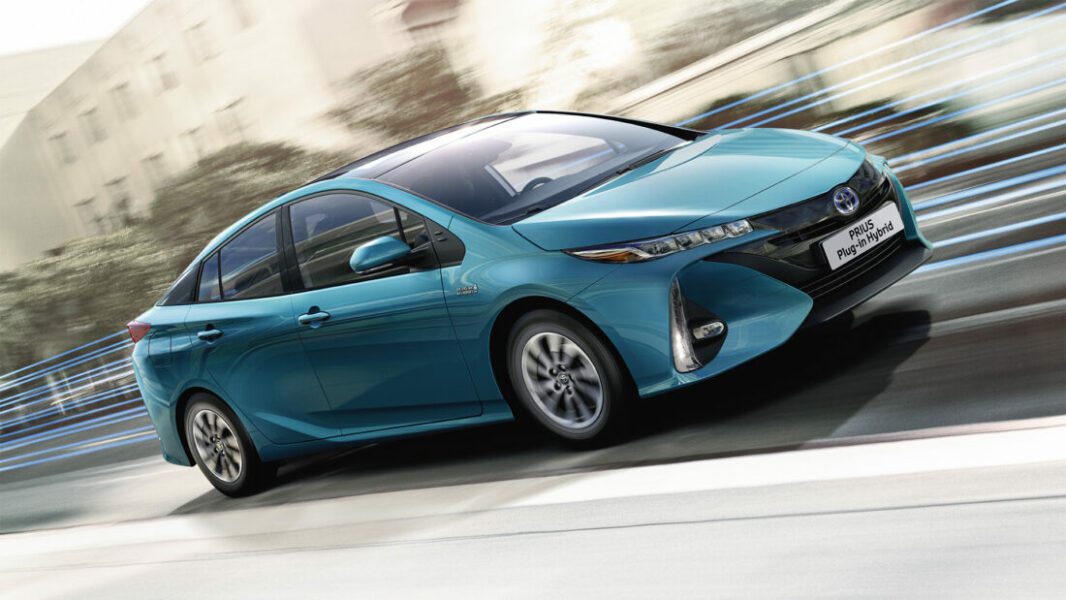
Toyota Prius Plug-In: Combustion over practicality?
Content
The Toyota Prius Plug-In is not a typical car. It looks different, although in our opinion it is better than the regular version of the Prius. It is charged from the outlet and drives like an electrician, but can also be powered by a gasoline engine. However, behind these well-known facts lies a secret - only four people are taken on board.
We were recently contacted by Tomek, who really likes Plug-In. So much so that I was one step away from buying. What convinced him?
"Why do I need such a car?"
“An electric range of 50 km is enough for me to drive to work every day,” writes Tomek. “I agree that the car is more expensive than a conventional hybrid, but the difference is small – I still prefer to spend more on leasing installments and less on fuel.”
Tom also likes the idea of a plug-in hybrid car. It's basically an electric car every day, and on long trips it turns into an economical hybrid "gasoline". In addition, it is fully charged in approximately 3,5 hours from a conventional electrical outlet. It doesn't need to buy an expensive fast charging station like electricians do.
And finally, the question of beauty. Tomek notes that the Prius and the Prius Plug-In are two completely different cars that shouldn't be put in the same bag when it comes to looks. According to him, the plugin looks great (ignoring the last sentence - we completely agree).
Everything spoke in favor of buying a Prius, but ... Tomek has three children. There wasn't enough room for one of them, as the dealership revealed the Prius was registered as a four-seater, making it an impossible choice.
Tomek shared his thoughts with us and we started to wonder what influenced Toyota's decision? Why couldn't a fifth place be added?
What does Toyota say?
There are rumors on the Internet that Toyota is planning to release a five-seat car someday. We asked the Polish branch about this, but we did not receive official confirmation of these rumors.
So we did a little research to find out more. Someone before us was able to determine that this configuration could be justified by Toyota research. Apparently, customers for this type of car don't want a sofa in the back and five seats - they want only four, but comfortable seats for everyone. Apparently Tom wasn't asked...
Another reason could be the oversized inverter and batteries that are located at the rear of the car. Apparently, this arrangement fits well into a four-seat cabin, but this was probably not the factor that technically decided to remove the fifth seat.
We dug further and looked at the definitions.
How is curb weight and GVM determined?
According to technical data Prius weighs 1530 kg. According to the data sheet - 1540 kg. We weighed our specimen on a cargo scale - 1560 kg came out without load. This is an “overweight” of 20 kg, but here it should be taken into account that due to the carrying capacity of such scales, the measurement error or possible rounding can be about 10-20 kg. So, let's assume that the measured weight corresponds to the curb weight from the data sheet. Permissible total weight is 1850 kg according to technical data and 1855 kg according to trial. We will trust the evidence.
Do you know how the permitted curb weight is determined? According to the Polish traffic regulations, curb weight is understood as: "the weight of the vehicle with its standard equipment, fuel, oils, lubricants and fluids in nominal quantities, without a driver." The fuel level in this measurement is 90% of the tank volume.
For passenger cars with LMP up to 3,5 tons, the minimum LMP is determined taking into account the number of seats in the cabin. On average, each passenger has 75 kg - 7 kg of baggage and 68 kg of own weight. This is the key. The smaller the seats, the lower the gross vehicle weight can be, the lighter the vehicle design can be.
Here we come to construction. Well, the permissible gross weight follows not so much from the regulations as from the carrying capacity of the car structure - it is determined by the manufacturer, who must provide for at least 75 kg for each passenger. Exceeding the DMC can affect brake performance, suspension performance, and increase the chance of tire blowout from overheating, so it's best not to exceed it.
How long will the Prius take?
Less weight means less fuel or electricity. Therefore, Toyota chose the lightest design possible. However, the batteries weigh themselves, and a simple calculation shows that the Prius Plug-In can only carry 315kg.
Thus, the curb weight of the car is the weight without a driver and with 90% fuel. Four people and their luggage - 4 * (68 + 7) - weigh 300 kg, but we add another 10% of fuel. The Prius tank holds 43 liters - at a reference fuel density of 0,755 kg/l, a full tank weighs 32 kg. So, add 3,2 kg. So, with fuel, a full set of passengers and their luggage, we have 11,8 kg for non-standard luggage. Sounds good, especially since the Prius Plug-In doesn't have room for four extra-large suitcases anyway.
However, this is only a theory. In practice, four people with an average weight of 78,75 kg can sit in the car. And not a kilogram was left for luggage - and yet this situation is not divorced from reality. It is enough to go to a training session with friends to surpass the DMK (after training, it might be a little better :-))
One thing is certain: neither in theory nor in practice, according to DMC, the fifth person on board simply does not fit.
Why did it have to happen this way?
In order to deliver sensational results such as 1L/100km fuel consumption and 50km range on a not-too-heavy battery, Toyota had to reduce the car's weight. According to the current approval procedure, the fuel consumption of each vehicle is checked with a load of 100 kg. The lower curb weight also reduces fuel consumption in tests.
And perhaps it was this pursuit of results that prevailed when Toyota developed the Prius Plug-In. It may not actually fit five people, because its design is too light and overloading can have negative consequences. Did someone push the engineers too hard? (although we're not expecting a Priusgate this time).
Or maybe the majority of Prius buyers are families in the 2 + 2 model and fifth place was superfluous?
After all, maybe Toyota only used this fact to better disassemble the hybrid drive components?
We don't know what ultimately caused the lack of a fifth seat, but surely customers like Tomek would prefer practicality - even with the knowledge that when a full set of adult passengers are on board, the trunk should remain empty. In any case, given that children usually weigh much less than adults, in the case of Tomek it would be far beyond the DMC. And, of course, Tomek wouldn't worry about a slightly higher fuel or electricity consumption - the Prius' economy is out of reach for most cars...

